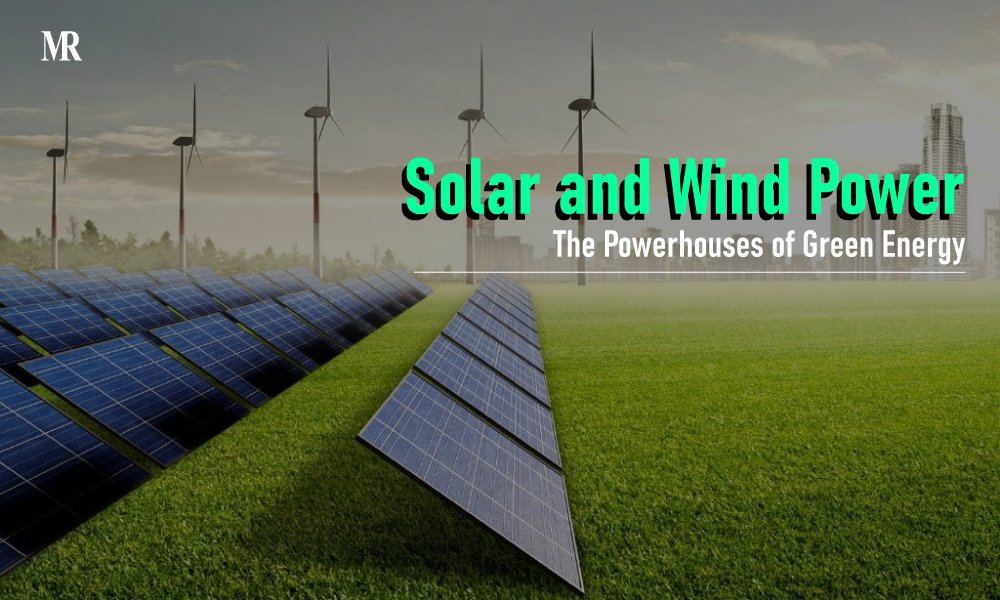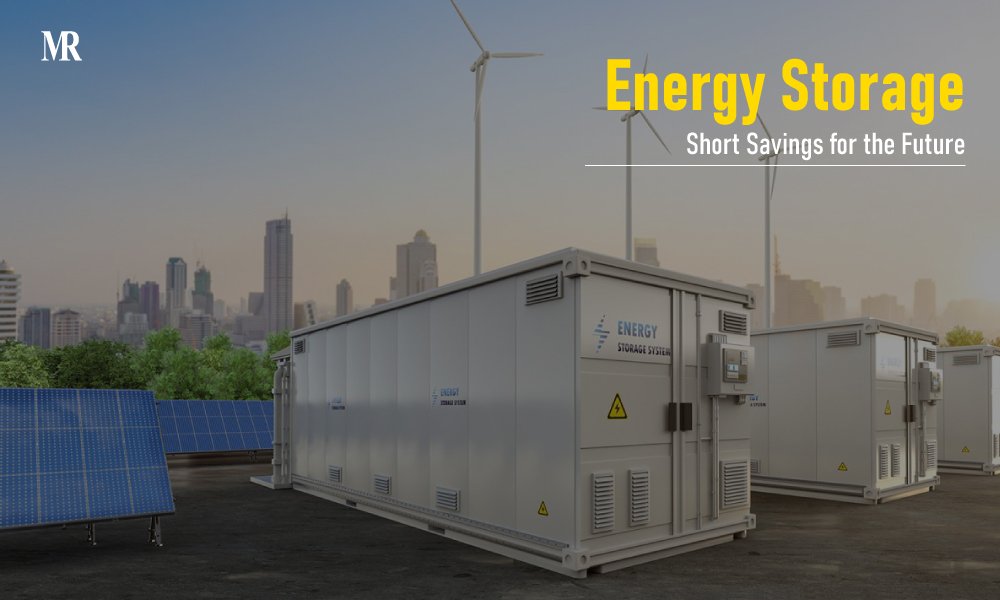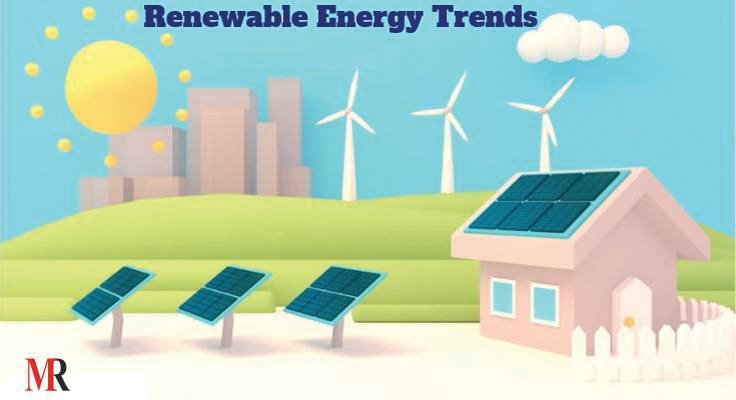Are you a person who is curious about renewable energy trends and technology? If yes, then you have clicked on the correct link. The energy sector is transitioning, and there is a need for new power resources. Thus, in the last two decades, we have witnessed some great technological advancements in the renewable energy sector. Solar energy has been at the top of the list. However, capable and enthusiastic scientists have introduced innovative pieces of technology to generate green power.
The list of recent trends in renewable energy is tricky, as everyone has their own perspective and research. However, this blog is your friendly guide to the top renewable energy trends 2023 and what they mean for our environment, economy, and daily lives. So, let’s get started.
Renewable Energy Industry at a Glance
Renewable energy is like a superhero for our planet, swooping in to save the day with its clean and sustainable power. In 2023, the renewable energy market is not just doing well; it’s booming. With a valuation of $1.21 trillion, it is expected to reach a whopping $3.60 trillion by 2030. This further boasts a compound annual growth rate (CAGR) of 17.2%.
In 2023, the Asia Pacific holds the crown for the biggest share of the renewable energy market, boasting a whopping 40.98%. Europe follows closely as the second-largest player, securing a substantial 28.57% market share. Not far behind is North America, claiming the third-largest market share at 18.24%. When we look at Latin America, there’s exciting potential waiting to be tapped, especially in harnessing hydropower and geothermal energy. Meanwhile, in the Middle East and Africa, investments are on the rise in solar energy, thanks to the abundant sunshine available in the region.
Renewable Energy Trends
Solar and Wind Power: The Powerhouses of Green Energy

In the year 2023, picture the sun and wind doing a high-five, working together to produce more energy than ever before. This isn’t just a fantasy; it’s a reality. Thanks to technological progress, supportive policies, and a growing desire for clean energy, solar, and wind power have become dependable sources of renewable energy. Using these powerhouses doesn’t just make our planet happier by cutting down on pollution; it also puts a bit more money back in our pockets.
- Solar Power Trends: The solar power scene is bustling with exciting developments. Integrated PV, where solar panels seamlessly become part of buildings, roads, and even vehicles, is gaining momentum. In 2023, we are witnessing a surge in this trend, making solar energy a part of our everyday surroundings. Advanced materials, like thin-film and perovskite technologies, are stepping up the game, making solar panels more efficient and flexible. Additionally, engineers are pairing solar with batteries to boost grid stability and explore off-grid solutions.
- Wind Power Trends: Offshore wind power is taking center stage with larger and more efficient turbines, capturing the stronger winds out at sea. And here is a cool concept – floating wind turbines. They are like superheroes on platforms, opening up new areas where we can harness the power of the wind.
Green Hydrogen: The Clean Fuel Revolution

Green hydrogen is like an unsung hero, quietly fighting pollution behind the scenes. It’s born from the magic of clean electricity, which splits water into hydrogen and oxygen. This superhero hydrogen doesn’t stop there; it goes on to be a clean fuel, powering industries and vehicles, and even warming our homes. Produced through water electrolysis using renewable energy, it’s becoming a key player in our journey to a cleaner future. Its power extends to decarbonizing tough-to-clean sectors, making it an exciting prospect for industries, transportation, and heating.
The green hydrogen market is on fire, set to revolutionize our race toward clean energy. In 2022, it was valued at $676 million, and brace yourself – it’s projected to hit a whopping $7,314 million by 2027, growing at a super-fast CAGR of 61.0%. Production, sitting at around 20 thousand metric tons in 2022, is expected to soar with a dazzling CAGR of 132% until 2032. The Americas are stealing the spotlight, accounting for about 45% of worldwide electrolyzer production.
When it comes to making green hydrogen, the cost game is changing. Right now, producing a kilogram can cost between $3 and $7.5, which is a bit higher than the hydrogen we get from fossil fuels. But here’s the exciting part: with technological advancements and economies of scale kicking in, we are expecting the cost to drop. By 2030, the forecast says we could be looking at a price tag of just $ 2.16 per kilogram in the US, making green hydrogen more wallet-friendly.
Energy Storage: Short Savings for the Future

Energy storage is the process of capturing and storing energy from renewable sources, such as solar, wind, and hydro, for later use. It can help balance the supply and demand of electricity, reduce greenhouse gas emissions, and increase grid reliability and resilience.
There are different types of energy storage technologies, such as batteries, thermal, and sand battery. Each technology has its own advantages and disadvantages, depending on the application, cost, and environmental impact. Here are some key facts about each technology:
- Batteries: This is the fastest-growing and most versatile form of energy storage, especially for grid-scale applications. Batteries can store electricity from various sources and provide fast and flexible responses to grid fluctuations.
- Thermal: This is the process of storing heat or cold in materials, such as water, molten salt, ice, or phase change materials, for later use in heating, cooling, or power generation. Thermal energy storage is predicted to triple in size by 2030.
- Sand Battery: Sand battery technology is one of the renewable energy trends. It is a high-temperature thermal energy storage system that uses sand or sand-like materials as its storage medium. It stores energy in sand as heat, which can be used later for heating, cooling, or power generation.
Sustainability: Backbone of Green Energy

Sustainability is not just a fancy term in the world of renewable energy trends; it’s the heartbeat driving the development and deployment of clean energy solutions. With the renewable energy sector facing increasing pressures and expectations from environmental, social, and governance (ESG) stakeholders, a commitment to sustainability is non-negotiable.
For renewable energy projects and companies to thrive, they must uphold rigorous sustainability standards. This includes minimizing their impact on the environment by reducing land use, water consumption, waste generation, and biodiversity impacts. It also extends to respecting fundamental human rights, and labor rights, and actively engaging with local communities.
Let’s break down why sustainability is more than just a buzzword and how it intertwines with the emerging trends in renewable energy:
- Sustainability isn’t just about reducing carbon footprints; it’s a comprehensive strategy. It considers the entire life cycle of energy production and consumption. Responsible material sourcing, efficient manufacturing, optimal operation, and mindful end-of-life management are all part of the sustainability equation.
- Circular economy takes the spotlight – the idea of reusing and recycling materials within renewable energy systems. Whether its repurposing turbine blades or recycling batteries, this minimizes waste and promotes resource stewardship.
- Decentralization is another key trend. Moving away from centralized mega-projects, smaller, community-owned renewable energy installations empower local communities, foster energy independence, and enhance grid resilience.
Conclusion: Let’s Make the Planet a Happier Place
The renewable energy trends in 2023 are like a story of superheroes – solar and wind power, green hydrogen, energy storage, digitalization, and sustainability – all working together to make our planet a better place. We need to join this renewable energy league and do our part. Whether it’s supporting clean energy in our neighborhood, learning about new opportunities and challenges, or imagining a future where renewable energy is the hero, we can all play a role in making our planet a happier and greener place to live.
Keep Reading! Keep Growing!
Also Read: 10 Mind-Blowing Facts About Offshore Wind Energy That You Probably Didn’t Know












